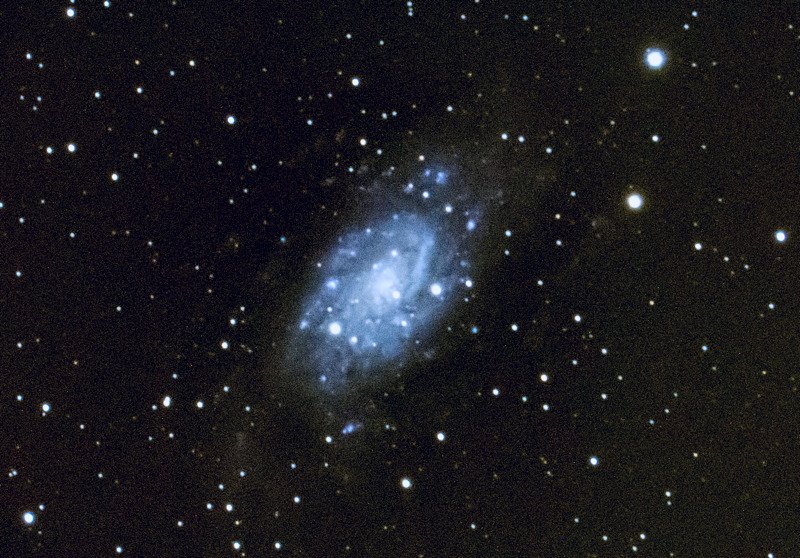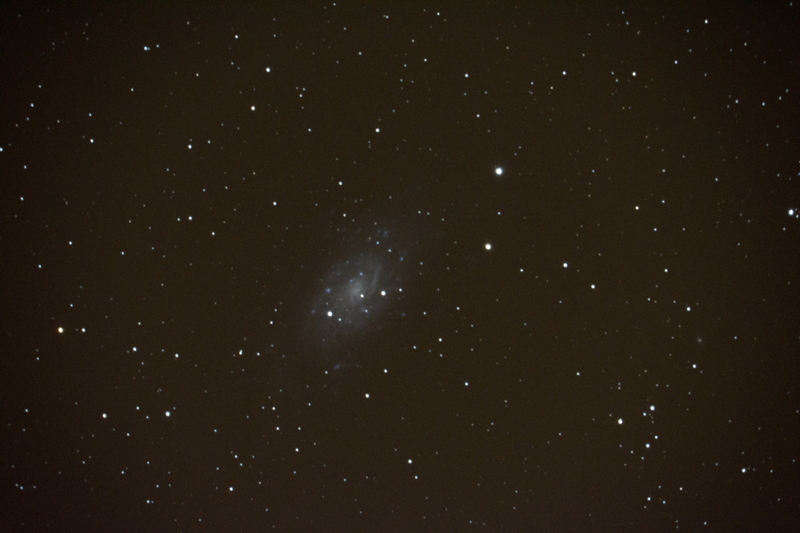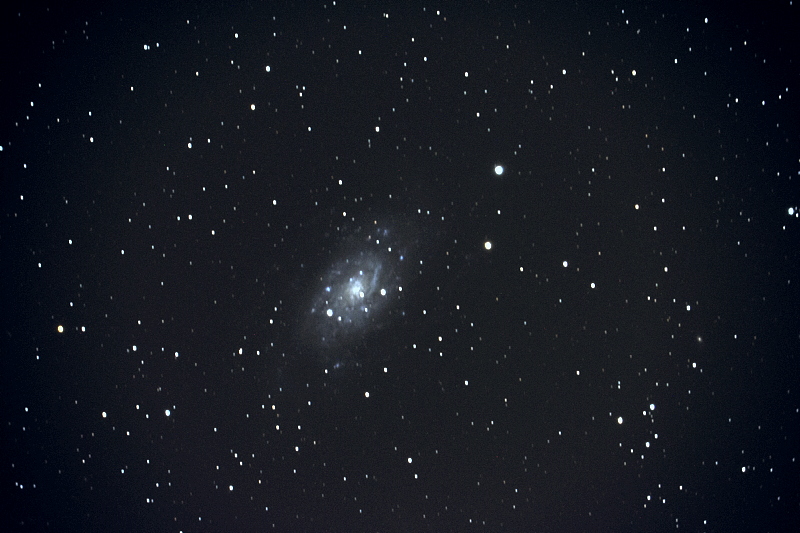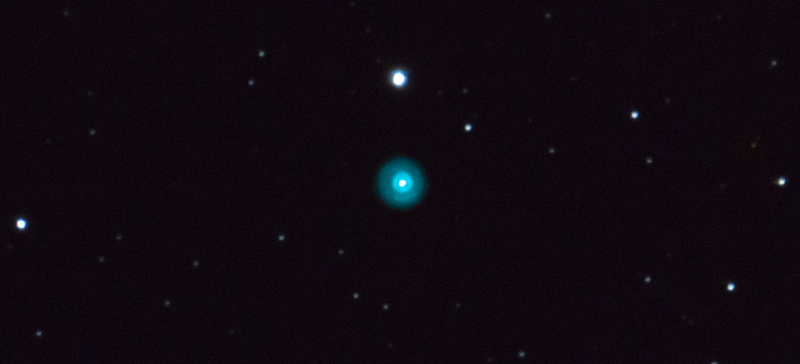DSLR Imaging: NGC2403 Galaxy,
NGC2392 Eskimo Nebula
Posted: 25 November 2016
Thursday, 24 November 2016, dawned cloudy and windy, but the sky began clearing mid-morning (although the wind continued). Went to the observatory late morning to do some more tests of the iOS app ScopeBoss for the developer. As sunset approached the sky cleared and wind died down.
|
Open: Thursday, 24 November 2016, 2126 MST Temperature: 56°F |
Session: 1048 Conditions: Clear, breezy |
Equipment Used:
12" f/8 LX600 w/StarLock
Wired AutoStar II handset
2" 24mm UWA eyepiece
Camera:
D7200 DSLR
2132 MST: LX600 ON, StarLock OFF, High Precision OFF.
Viewed NGC253 (Sculptor Galaxy), 102X.
2135 MST: Wi-Fi ON. Did some quick ScopeBoss iOS app tests with the LX600. 2139 MST: tests completed.
2140 MST: slewed to the star Capella and SYNCed. Using SkySafari 5 Pro on the iPhone did a GOTO to the eclipsing binary variable star RW Tauri. I wanted to check out the star field for an eclipse that would occur in December, per an article in the January 2017 issue of Sky & Telescope magazine. I spent a long time trying to identify stars to match the chart in the article, but I never could. I will need to print a better finder chart and try again on a future session. 2231 MST: ended RW Tauri hunt.
Mounted the D7200 DSLR at prime focus + focal reducer. Focused and locked using the star Capella.
I've read many articles about using a "native ISO" (low value) for DSLR astrophotography but I never got good results with that technique. That is, until on the previous session when I imaged NGC253 (Sculptor Galaxy). See the previous report for the comparison images. The Sculptor Galaxy was a bright object so perhaps those results were not typical. I will be imaging fainter objects using exposures of 5 minutes at ISO 6400 and 2 minutes at ISO 800 for comparison. I already know that star images grow as the exposure is increased, so using a short duration and lower ISO will help prevent that. My plan for this session was to image NGC2403 (galaxy, a little fainter than NGC253).
This is a StarLock autoguided, 5 minutes, ISO 6400, White Balance 4000K image, cropped from the full-frame image:

I then did several StarLock autoguided, 2 minutes, ISO 800, WB 4000K, images. This is one of those images (full-frame) with "levels" adjusted to brighten the galaxy:

This is a stack of 7 images using Keith's Image Stacker, edited:

So which is the best image? Hard to say. Will continued the low ISO imaging tests on future sessions.
2325 MST: StarLock OFF. Removed the focal reducer and refocused/locked and SYNCed on the star Pollux.
2342 MST: began imaging NGC2392 (Eskimo Nebula, a bright planetary nebula. This is a StarLock autoguided, 15 seconds, ISO 800, image (cropped):

2351 MST: StarLock OFF. Ended imaging.
Viewed the Eskimo Nebula, 102X. Then M42 (Orion Nebula), 102X. I never tire of looking at the Great Orion Nebula.
0009 MST: LX600 OFF.
|
Close: Friday, 25 November 2016, 0019 MST Temperature: 57°F |
Session Length: 2h 53m Conditions: Clear, breezy |
I added a search capability to my Photo Albums page. You can now search for a specific image I have taken.
Comments are welcome using Email. Twitter users can use the button below to tweet this report to your followers. Thanks.
Cassiopeia Observatory Home Page
Copyright ©2016 Michael L. Weasner / mweasner@me.com
URL = http://www.weasner.com/co/Reports/2016/11/25/index.html
